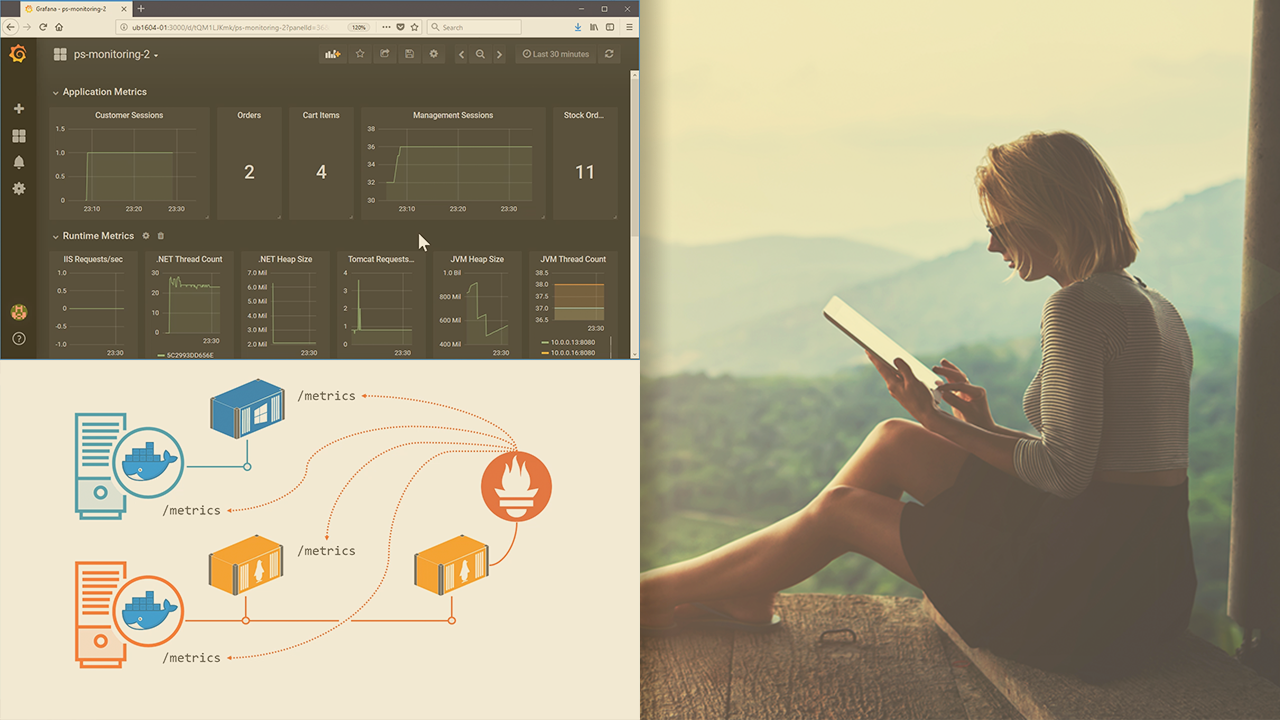- Course
Monitoring Containerized Application Health with Docker
You can add consistent monitoring to your whole application with Docker, the same for every container in every environment. This course teaches you how to expose metrics from Linux and Windows containers, collect them, and display them in dashboards.

- Course
Monitoring Containerized Application Health with Docker
You can add consistent monitoring to your whole application with Docker, the same for every container in every environment. This course teaches you how to expose metrics from Linux and Windows containers, collect them, and display them in dashboards.
Get started today
Access this course and other top-rated tech content with one of our business plans.
Try this course for free
Access this course and other top-rated tech content with one of our individual plans.
This course is included in the libraries shown below:
- Core Tech
What you'll learn
It's easy to run new and old applications in Docker, but you can't put containerized apps into production without monitoring. In this course, Monitoring Containerized Application Health with Docker, you'll learn how to implement effective monitoring for Linux and Windows containers. First, you'll learn how to gather and visualize metrics from containers using Prometheus and Grafana. Next, you'll see how to add metrics to your application, and export metrics from the Java and .NET runtimes and from the Docker platform. Finally, you'll explore how to build an effective dashboard with a single view over the health of your whole application. When you're finished with this course, you'll be ready to add monitoring to your application and move confidently to production.
Monitoring Containerized Application Health with Docker
-
Course Intro and Module Overviews | 2m 55s
-
Understanding Monitoring for Containerized Apps | 3m 45s
-
Demo: Monitoring Containerized Applications | 4m 29s
-
Introducing Prometheus and Grafana | 2m 3s
-
Demo: Monitoring with Prometheus | 3m 33s
-
Consistent Monitoring with Containers | 2m 12s
-
Demo: Docker Platform Metrics | 2m 28s
-
Module Summary | 1m 30s

